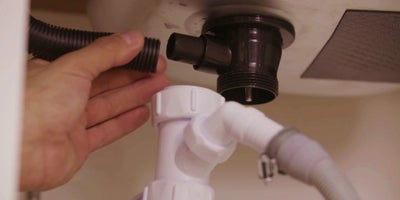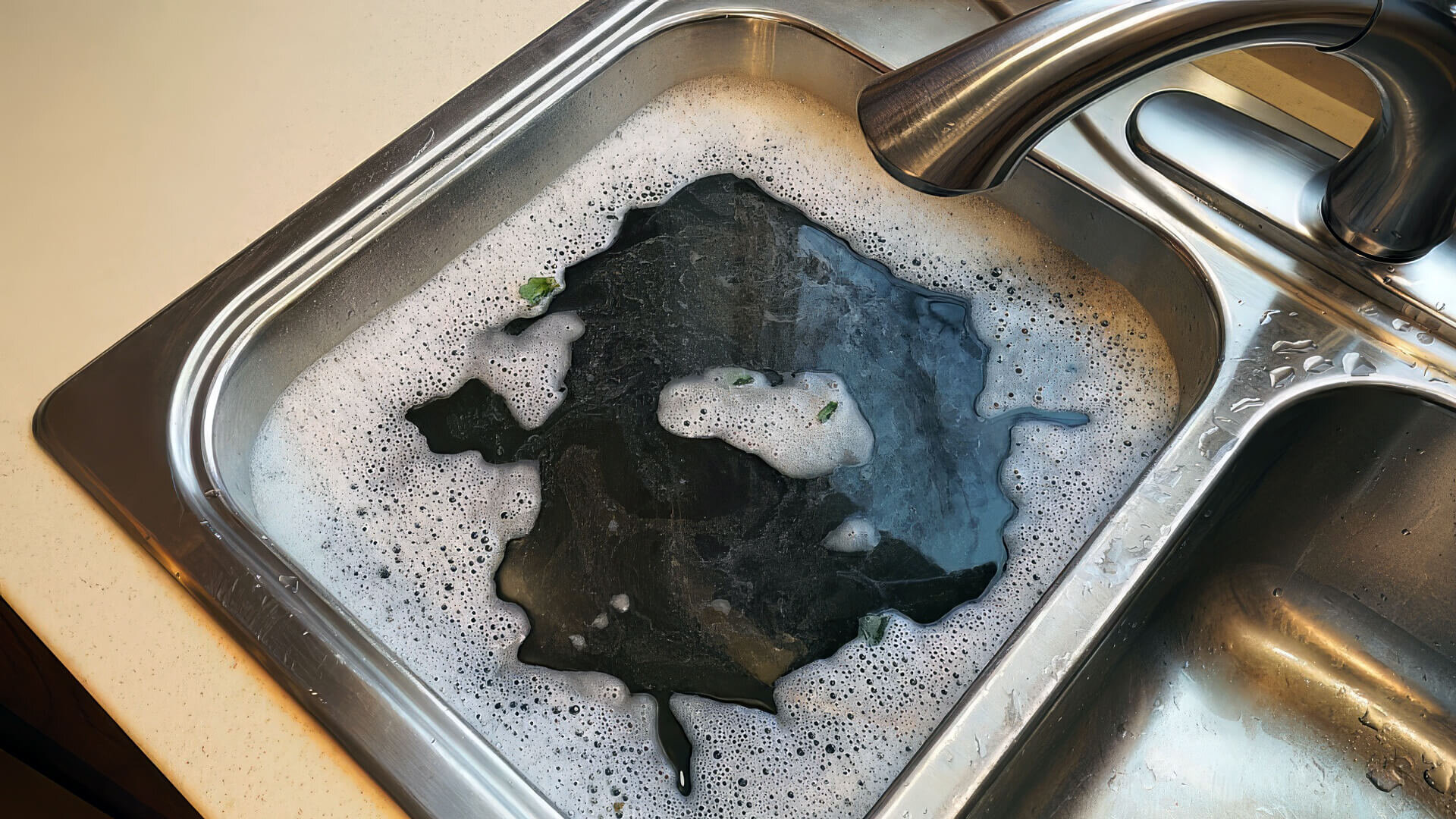Useful Tips For Resolving A Slow-Draining Sink
Useful Tips For Resolving A Slow-Draining Sink
Blog Article
We've encountered this great article relating to How to Fix a Slow Draining Sink below on the web and felt it made good sense to write about it with you on this site.

Intro
We have actually all existed: You're cleaning your teeth or cleaning your hands, and you notice the water merging in the sink. Rather than swiftly swirling down the tubes, it remains, transforming your once-refreshing morning routine into a mini swamp scene. A slow-draining sink isn't just frustrating; it's commonly an indication of bigger pipes concerns hiding below the surface area. Fortunately is that the majority of slow-draining sinks can be repaired with a little know-how, a few standard tools, and some persistence. Prepared to tackle this task head-on? Allow's roll up our sleeves and dive right in.
Understanding the Reasons For a Slow-Draining Sink
Before you start poking around in your pipes, it helps to know what may be triggering the downturn. Comprehending the root cause makes it simpler to choose the appropriate solution.
Tools and Materials You'll Require
The right tools make all the difference. Luckily, you won't require a completely stocked plumber's van to do the job.
Step-by-Step Guide to Fixing a Slow-Draining Sink
Now, let's enter into the nitty-gritty. This step-by-step process will assist you through easy strategies to restore your sink's drain.
Step 1: Eliminate and Tidy the Stopper
Commonly, the stopper (that little plug you push down to block water) is the initial wrongdoer. Remove it thoroughly and wipe any kind of hair or substance entraped around its base. Wash it thoroughly prior to putting it back in place.
Step 2: Use a Plunger to Remove Debris
Got that plunger prepared? Setting it over the drain and provide it a few firm pumps. The idea is to create suction that can loosen any clog. If you see little bits of particles floating up, you get on the right track.
Action 3: Try a Drainpipe Snake or Cable Wall Mount
If the bettor doesn't work, it's time to bring out the drainpipe serpent. Carefully feed it into the drain and twist as you go. You could really feel some resistance-- that's likely the obstruction. Keep turning and drawing up until you remove the obstruction. If you do not have a drain serpent, a corrected wire wall mount can operate in a pinch.
Step 4: Use a DIY Drainpipe Cleaner
An all-natural cleaner made from cooking soda and vinegar can break down residual crud. Pour half a mug of baking soft drink right into the drainpipe, complied with by half a mug of vinegar. Let it fizz for about 15 minutes, after that flush with warm water. This chain reaction typically does wonders for minor clogs.
Tip 5: Rebuild and Evaluate the Sink
Put every little thing back with each other and run the faucet. Does the water currently swirl down the tubes at a commendable rate? If yes, provide yourself a pat on the back. If not, don't anguish-- there are still a couple of even more dress up your sleeve.
Essential Devices for Do It Yourself Fixes
A plunger is your best starting point. A tiny, sink-sized bettor produces suction that can dislodge small obstructions. For even more persistent clogs, a drainpipe snake (occasionally called a plumbing professional's auger) works marvels. A pair of handwear covers, a flashlight, and possibly a pair of safety safety glasses are likewise handy.
Recommended Cleaning Solutions
Mild meal soap and warm water can help break down greasy accumulation. A mixture of baking soda and vinegar is a reliable home remedy, and enzymatic cleaners provide an even more eco-friendly approach. Keep chemical drain cleansers as a last resort, as they can be extreme on your pipes.
Typical Culprits Behind Slow Water Drainage
So, what's blocking points up? Commonly, it's a combination of day-to-day particles-- believe hair, soap residue, tooth paste residue, and remaining food bits. Over time, these tiny bits gather and hold on to the pipeline walls, gradually narrowing the flow and making it harder for water to travel through. Sometimes, natural resource from difficult water can additionally add to the substance, producing the excellent tornado for stubborn obstructions.
When is it Time to Act?
If you notice the water draining pipes slower than usual, it's a great concept to interfere sooner as opposed to later. Waiting as well long could result in finish blockages, undesirable smells, or perhaps pipe damages. If the water takes greater than a couple of seconds to clean out after turning off the tap, consider it a warning and prepare yourself to put on your do it yourself hat.
Safety And Security First: Precautions and Preparations
Prior to you launch into unclogging setting, think of safety and security. You're taking care of potentially dirty water and particles, so slip on a set of gloves. If you're using chemical cleansers, make sure the room is well-ventilated and adhere to the directions on the tag.
Protective Equipment and Work Area Setup
Put down some old towels or rags around the sink location to catch dashes. Remove any type of things that might get in your way, like soap dispensers or tooth brush owners. Make certain you have excellent lights-- get a flashlight if needed.
Different Techniques for Stubborn Clogs
Not all clogs are developed equal. If your sink still declines to cooperate, take into consideration these alternate solutions.
Sodium Bicarbonate and Vinegar Method
We already discussed this, yet it's worth keeping in mind once more. This gentle, environment-friendly approach is more secure than chemical cleaners and typically fairly reliable.
Enzymatic Drainpipe Cleansers
Enzyme-based cleaners make use of all-natural microorganisms to digest organic matter. They're an exceptional selection if you're wanting to prevent rough chemicals. Simply bear in mind, they might take a bit longer to function their magic.
Chemical Drain Cleaners: Advantages And Disadvantages
Chemical cleaners can blow up with tough blockages quick, however they're not without disadvantages. They can produce heat and fumes, damage pipelines if made use of exceedingly, and present ecological dangers. Use them sparingly, and constantly comply with the directions carefully.
Preventive Measures to Maintain Your Sink Flowing
Avoidance is the most effective treatment. By embracing a couple of basic habits, you can keep your sink from reducing in the first place.
Normal Cleaning Up Routines
Clean down the sink container and component location frequently. Get rid of hair or food fragments prior to they have an opportunity to wash down the drainpipe.
Staying Clear Of Harmful Compounds Down The Tubes
Hesitate before dumping coffee premises, oil, or coarse vegetable scraps down the sink. These wrongdoers hold on to pipe wall surfaces, developing obstructions in time.
Routine Maintenance Checks
Set up a fast month-to-month inspection. Run hot water with the sink for a few mins, paying attention to the flow. If it seems slow, act quick before it ends up being a full-on obstruction.
When to Call a Specialist Plumber
Sometimes, no matter exactly how difficult you try, that obstruct just will not move. That's when it's time to generate the pros.
Indicators That Show an Extra Serious Problem
If your sink drains slowly regardless of numerous attempts, or if you observe water supporting in other fixtures (like your shower or commode), you might have a more major plumbing issue hiding deeper in the system.
Balancing DIY Efforts with Expert Help
While do it yourself can conserve you money and provide a sense of accomplishment, there's no shame in calling an expert. A specialist plumbing technician can examine your entire plumbing arrangement, making certain there's no underlying damage or long-term problem that might cost you extra down the road.
Comparing Expenses and Long-Term Solutions
Prior to choosing, consider the big picture. A cheap, quick fix may solve the problem temporarily, yet buying a much more irreversible solution might save you money and stress and anxiety over time.
Considering the Costs of Do It Yourself vs. Specialist Fixes
Do it yourself fixes often cost bit greater than the rate of a bettor or a container of cooking soda. Professional services, on the other hand, included a price however might avoid repeated problems and expensive repair services later.
Purchasing High Quality Fixtures and Upgrades
If your sink's style adds to constant obstructions, it may be worth upgrading to higher-quality fixtures or modifying the plumbing format. Consider this a financial investment in your home's capability and comfort.
Final thought
A slow-draining sink can seem like a minor irritability, but it's typically a sign that your pipes requires a little TLC. By recognizing the origin, utilizing the right tools and techniques, and dedicating to simple preventive measures, you can keep your sink streaming freely. And when all else stops working, never be reluctant to call a professional-- your home's pipes deserves the investment in treatment and upkeep.
4 Tips to Fix a Slow Draining Sink
Removing the Pop-Up
This is a great place to start when it comes to troubleshooting a slow draining sink. If your sink has a pop-up, carefully take it out and remove debris that has built up around the tool. This will also allow you to see if there are any significant blockages in the drain that you can pull out on your own to help clear up the issue.
Use a Zip-It Tool
Like a snake for a large drain, a zip-it tool helps clear out any debris or hair from a sink drain. A tool like this can be used with a drain that pops out or not as it s thinner than most snake-like tools.
Use a Drain Cleaner
Whether making an at-home cleaner or buying a solution at the store, this is a common fix many turn to when it comes to a slow draining sink. There are several options available for purchase at local supermarkets, but for those who prefer to create their own solution, one of the most common is the following.
How to Unclog a Drain Naturally
Pour boiling water down the drain Pour cup of baking soda down the drain Pour cup of vinegar down the drain Wait 10 minutes Pour boiling water down the drain again Turn on the hot water faucet to clear out the solution Use a Plunger
As a worst-case scenario option, a plunger may be a good option for those who are still struggling to get debris out of their drain. This could be especially useful if there is a large item that you suspect may be significantly stuck down the drain.
https://www.abaileyplumbing.com/blog/2021/august/4-tips-to-fix-a-slow-draining-sink/

Do you enjoy reading up on 4 Tips to Fix a Slow Draining Sink? Post a short review down below. We will be happy to hear your suggestions about this blog posting. In hopes that you come back again before long. Do you know another person who is serious about the subject? Why not promote it. I take joy in your readership.
Get An Estimate Report this page